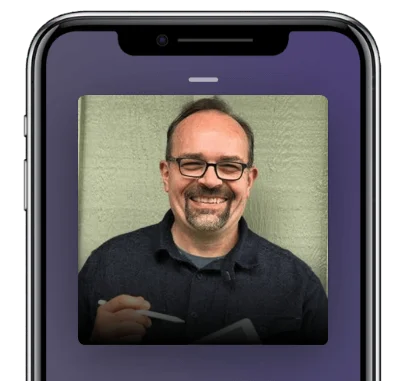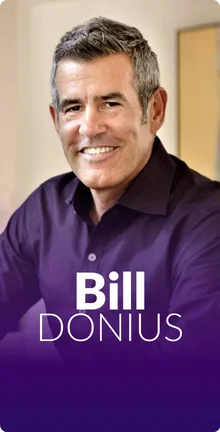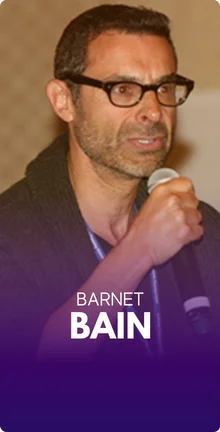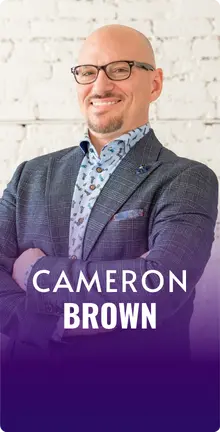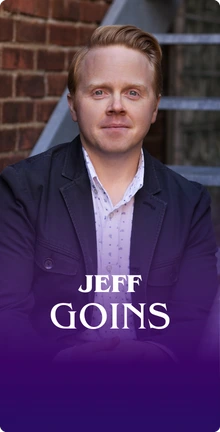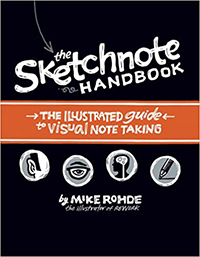
Mike, it’s a great pleasure to have you on this podcast today. Thanks for joining us.
Thanks, Stephan. I appreciate being on the show. This is a lot of fun.
Cool. Let’s start by if you could just share a little bit about how you got into sketchnoting and actually what sketchnoting is.
Yes. Let’s start with a description of what it is. Sketchnoting is something … I like to call it ‘Notes plus’. That seems like a good way to put the idea in people’s minds. What that means is you’re still writing words, so you’re trying to understand what someone is saying either in a meeting or a talk, or in your own head, or an experience. You’re using words to describe it, but instead of only using words, you’re adding some additional visual elements, so things like little icons to represent things or drawings of a concept that maybe is appearing in your mind that relates to the words you’re writing. Then, enhancing your writing by using lettering techniques to make bolder letters, bigger letters to give emphasis to certain things over others so that you end up with an interesting map of your ideas whether that’s an idea that you’re hearing being presented in talk or it’s an experience like say traveling and trying to capture that experience of being in that place, or even if it’s ideation like it’s a team or individual project where you’re thinking of concepts, and you’re trying to capture those ideas in a very high-definition way. I think that the visual part of the drawing and the lettering adds that additional high-definition to the text. There’s some research behind that, some recently and some older, that suggest that this is a very effective way for people to express ideas and remember concepts.
This sounds really good. I’m all for capturing and dumping stuff out of my head into a trusted system like a sketch notebook or in my case, I use ‘things’ for my Mac. However, I don’t consider myself an artist in a traditional sense. I’m not very good at drawing, so would sketchnoting still be a good fit for me?
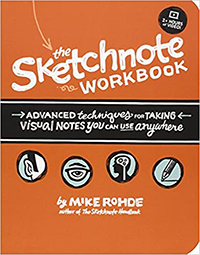
I think it can be. A lot of it has to do with practice, but I think that the one approach that I’ve taken with this whole sketchnoting idea is to remove it from the space of art and move it into communication. If you can draw a simple object that communicates the idea, whatever that is, that’s effective enough. It doesn’t have to be beautiful artwork. In fact, the way I start the books, the way I start on my talks is, to begin with, very basic drawing techniques and walking audiences and students through this idea of using five basic elements to draw things. That would be a square, circle, triangle, line, and a dot. The way you approach it is a little bit different than typical life drawing where you’re trying to capture the shapes of things and working, sort of you’re building this map that way.
The idea behind using these five basic elements is you’re building things, almost like building blocks as a kid where you’re taking these pieces. You’re observing a thing and you’re looking and saying, “That’s like a rectangle, and there’s a circle on top of it”, and you can put these pieces in there. It doesn’t require that you’re a great artist. It’s much more focused on the ideas that are behind what you’re drawing. That removes the stigma or baggage. I mean, there are lots of people that have baggage around drawing that I think this removes that, or at least it directs you in the place where it’s not so important. Once the discussion changes from “How good your art is”, to “How well can you communicate with basic shapes?”. I think that puts it in the space of many more people, especially those who feel like they’re not particularly great artists. I would say the second thing is, the more you do drawing this way and you just do basic drawing and work on these skills, the better they get. I mean, a lot of the work that I do is as a result of lots and lots of practice and trying things out, so there’s really no substitute for that part of it and I think anybody can do it if they set their mind to it.
Right. I’ve heard that if you take handwritten notes versus putting it directly into the computer like an iPad or laptop, that it wires in your brain differently so that you remember it more, it’s higher retention and better conceptual understanding. I guess this would also apply to sketchnoting too. Right?
That’s exactly right. I was just reading that article early this morning. It was a study done by Oppenheimer and Mueller. Did the three different tests, and effectively, they put handwriting, note people with those who type their notes on a keyboard like in a laptop or something like that. They played the recorded videos for them and tested them on different things. One of which was probably the most interesting was the long-term memory of like they came back a week later and asked them questions.
They had a ten-minute test based on the video that they saw and they’d answer questions in this test. Consistently, the handwritten note people seem to understand the concepts that were being presented better. What the result that they found overall was that people that take notes with typing, while it can be quite a bit of quantity even with study for that test, they’re not really analyzing the data even after they’re told not to write it verbatim, but to write it in their own words. There’s something about the keyboard that pushes us towards basically taking verbatim notes. You’re just typing what the person is saying and you’re not really analyzing, whereas someone who’s doing longhand, because I think I have a sense that because you realize you can’t capture everything or it’s very difficult, you fall back on this analyzing at the moment what it is that you’re hearing and looking at concepts instead of trying to capture everything verbatim because it’s too difficult to do that. Wherewith the keyboard, it’s almost possible. Right?
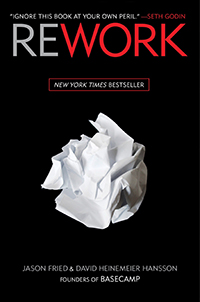
It would be interesting to see where those studies go, but that seems to be the suggestion from this study. There’s an older study that’s really fascinating by a guy named Allan Paivio. His proposition was that our brains work in two channels. We have a verbal channel that deals with words and writing and those kind of things, but then, we have a visual channel. That’s images and pattern recognition, and that kind of thing. He suggests that they’re both very powerful individually, but they become amplified when you overlap them. The idea that you both write and draw something at the same time and they overlap each other, creates a matrix of memory. It’s saving little bits of this thinking all over your brain, and so it’s more likely that you can pull back a richer memory based on this approach of using writing and drawing together. Those are some interesting studies. I’m hoping that there’s more coming they can go verify that this is a valid way to go and that it’s actually beneficial to the way we as humans process information. We’re pattern recognizers, so approaching things from that perspective seems like a good way to go.
Yes. Absolutely. Let’s circle back to my original question. If you could share with my listeners here, what is the story behind how you got into sketchnoting because this is a passion for you? I don’t know if it’s been that way your whole life or there was some event that got you into this, but you seem to be like the primary champion in the world for sketchnoting with multiple books under your belt, and workshops, and websites on the topic. How did this all start?
That’s a really great question. It started with pain actually. I’m finding more and more that as I look at people who solve problems, it begins with some personal pain that they’re trying to solve. For me, it was an attempt to try and take verbatim notes by hand. I had gotten to a point in late 2006 where I had these large, I think they’re 11 by 14 sized books with lined paper in them.
I would take notes at events and in meetings and such in high detail, and I was so worried about the quality of my notes that I actually used the pencil because I was concerned that if I needed to erase something in the future like a mistake, I spelled someone’s name wrong or got a spelling error of some kind, I could fix that in my notes, in my giant books. By the end of 2006 after a couple of years of taking this approach, it had just become too much of a burden and really frustrating for me. The reason was because I would be really dedicated to the meetings to take these notes. I approached it with this idea that I’ll capture really high fidelity notes, and in the future, I could go back, look through these notes and find relevant information that would be helpful for me. The reality was I never looked at those notes again primarily because it was almost like a tangled jungle of vines to go through this information. It was so detailed that I just didn’t really want to spend the mental energy to revisit that whole thing again and try and find the relevant info. I knew that something had to change.
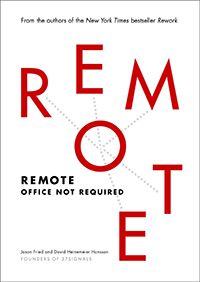
As a designer, I’m always dealing with the limitations of one kind or other constraints. Sometimes, I put constraints on myself to help me think differently. In this case, that’s what I did. I started to think, “It’s not working if I have a giant book where I can write everything down and I’m using a pencil. What would be the opposite of that? Maybe I should try a small book, and maybe instead of a pencil, I should use a pen. What would happen if I did that?” It turns out, I had a conference I was attending in early 2007 in Chicago which is about a 90-minute trip for me. I went to the event and I set out to try this idea. “What if I use a small book and a pen? What would happen if I did that?” When I got to the event, I try it and I found that it was actually really effective partly because the book was so small. It basically took writing every detailed note off the table, unless I was going to write in microscopic lettering which would be hard to read and also probably cramp my hand. The switch from pencil to pen was also impactful because as know with the pen, when you put it on the paper, it’s going to be there. Either you leave it alone and you just let it be what it is, or you turn it into something else or you scratch it out. I had to be much more deliberate about what I captured by using this pen.
For me, that combination was a good way of redirecting my thinking. What that led to because I had limited space and I had to be delivered about using a pen was it moved me into a place of, “Why couldn’t I analyze the ideas that I’m hearing right now, and only put down the ones that seemed relevant to me?” I go to these conferences with the idea that I should improve my abilities, and that there are things that I would more likely do than others. There are some things that are in context to what I do and some that aren’t, so why shouldn’t I maybe analyze the things that are valuable, capture those? If something feels like it’s not valuable to me or not interesting, maybe I can leave those off. Then, with the spare time that I have from not taking copious notes and from doing this analysis in the moment and making things in my own words, maybe I can start to stylize my notes a little bit. I could start using lettering which I’ve always love to do as a way to emphasize words or if a concept came to mind, I could just draw that.
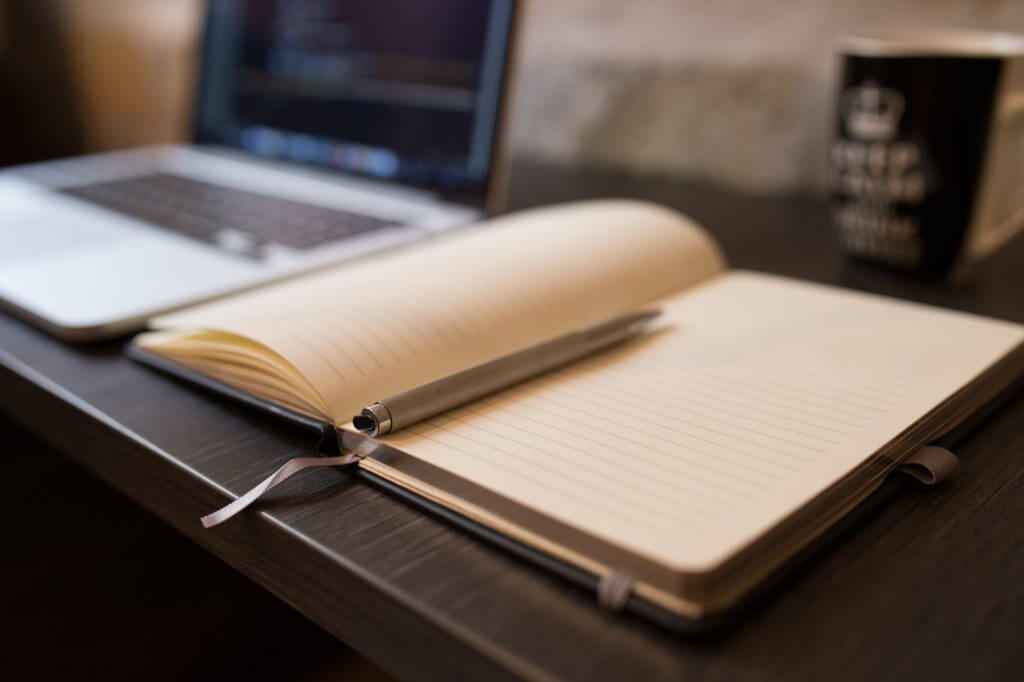
I really had a great time and it’s catapulted me into doing this at all the conferences I attended, and I started sharing them on Flickr. They started getting traction. The 37 Signals guys who are now Basecamp saw them and they put them on their blog and put them to another level. Then, I was being invited to come to conferences as the sketchnoter, and I would do this work for them and give my perspective and share that with the attendees. Eventually, being hired to come and sketchnote at pretty large conferences, being flown in and put up in a hotel, and then I would sketchnote the speakers and provide those in different forms, PDF or photos for conference organizers. Then, that eventually led to this idea that “Maybe if this is helping me, I should probably really be sharing these ideas.”
I had been doing that but in a cohesive way. That’s what led to ‘The Sketchnote Handbook’. Then, the workbook came after that as this idea of expanding sketchnote and beyond just conference notes to ideation, and capturing processes, and planning projects, and capturing experiences. That was the story. Now, I’m in the place where I’m doing speaking and workshops for people to help teach them and kick-start them into using these techniques in their everyday lives.
You have these two books, ‘The Sketchnote Handbook’ and ‘The Sketchnote Workbook’. How do those work together? You said that the handbook was your first foray into this topic and how to use sketchnoting to take notes at conferences and so forth, but then, sketchnoting can be used for ideation and process mapping and so forth. I think of a workbook more as experiential exercises and a handbook more like, “Here are the guidelines. Here are the approaches. Here are the processes and structures of it.” Could you maybe differentiate the two a bit more?
You’ve actually established a really good baseline for the separation between the two. The Handbook was my first book and really was a way to capture the concept in a 360-degree view maybe not with extreme detail, but in enough detail that you could understand the idea. We also shot a video companion that goes with the book. Some of the books of the handbook include the video. Some don’t include it. It’s more of an option. That was really interesting because there were things we could show in the video that was difficult to show in a printed book. I think in that sense, the combination of those two is really interesting, especially some people are more visual learners and really are helped by having someone demonstrating it for them on video, so yes.
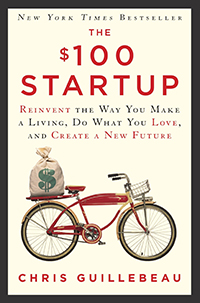
The handbook was basically establishing the idea, putting it into a form that someone could understand. One of the really key things for both books as it turns out was this idea of community. I had a sense that there was a community of people that did this, and I didn’t want it to be Mike Rohde’s sketchnote sampler, so I made a really heavy-duty effort to get lots of other people in the book, samples of other people’s work to show these concepts. To some degree, I did some illustration, some of my work appears in there, but by far, the samples that you see are from other people to show the community. One of the interesting things in the handbook that we did was I invited several of my friends and people I had made contact with that were doing sketchnoting to have a two-page spread in the book so they could do whatever they like, tips, and their story as a way to show these different styles and different approaches. That was really the first approach was just to show the idea and let people see what the concept was, and see a wide variety of samples. That’s the handbook.
After we were done, I wasn’t sure if I would write another book because book-writing is quite difficult, and this one was particularly tough. We did it in nine months. We did a book and a video in nine months, so it was quite a drain. I had my youngest son during the process, so that added some extra stress, but we survived. After I was done, I wasn’t sure if I ever wanted to write another book again. Just a year and a half later, my editor talked me into it, and I felt like there are still things that could be said and there are ways that we’d take sketchnoting in some new directions. I did want it to be limited to only this idea that, “Sketchnoting is just for capturing conference notes”, which is a very valid way to use them. We decided at the time that that was the most applicable way to share them. That was how people could apply them immediately in meetings and at conferences, but there were still lots of ways they could be used in people’s lives. That’s where the workbook came in.
As you said, this idea that there are activities in there was very important, so there are lots of worksheets in there to help you develop icons for your own library of visual icons. There are lots of activities to do as well outside the book, so creating tree houses and other unusual activities, but that stretch your creative muscles and have you try things like taking a travel sketchnote when you’re going someplace or taking a process and seeing if you can sketchnote through the process and see how that works. That was just this variety of different ways that you could use sketchnoting to capture your thinking or your experience, or whatever it is that you were having happened to you that you could document it in an interesting way. That’s what the workbook was. Again, we did a video with that. That video was almost two hours long, and it shows lots of samples and applications to help people again who like the video to use that as a place to learn from. We learned our lesson from the first book to just simply bundle the video right into the book and not have separate versions. It makes it much simpler, so everybody gets a copy of the online video that way. That’s worked really well. Both books are very popular and have sold really well, and I’m excited that they’re helping people. That’s really was the goal behind doing both of them.
Right. Do you have any case study examples of like a before and after of somebody doing the traditional approach, and then they started doing sketchnoting and had a huge breakthrough in their lives and their business and their career or whatever because of this?
Sketchnoting helps people expand their vocabulary to capture ideas from beyond just writing things to being able to draw things.
Actually, yes. That’s one of the interesting tidbits that we’ve included in the workbook. In the handbook, you remember I mentioned that I gave a spread to individuals to take two pages and show where they came from, how they started in sketchnoting, and then share tips and stuff. We wanted to continue that tradition but in a different direction. What we did was I basically started reaching out to the community and said, “Okay. These are the different used cases for sketchnotes”, travel or processes, or we had a whole list of the things that we wanted to try and demonstrate. We said, “Who out there is doing these things?”, or “If you’re willing, would you be willing to try these?”, and then we’re going to document it and share it as a case study. Each chapter has a case study with an individual. It talks about how they came into sketchnoting and how they use it, and then how they use it in this particular way with the samples of their work. I don’t know that we actually showed the before and after. That’s an interesting concept, but lots of people will describe what it was like before they used sketchnoting and how that’s helped them to expand their vocabulary to capture ideas from beyond just writing things to being able to simply draw things.
One that I really liked was there’s a doctor down in Texas that uses a … He’s a pediatrician. He uses sketchnoting on whiteboards to explain concepts to the children that he sees, but also to their parents. He might explain a bowel obstruction. Rather than sit there and explain it in really technical terms as a physician might be comfortable doing, he actually puts it into human-understandable terms and then draws as he’s talking on his whiteboard, so that everybody all together goes through this process and understands what the concept behind says an obstructed bowel or whatever it might be. He uses those visuals to capture the kids. The kids really liked that their doctor draws and explains it in a way that they can understand. That’s a really interesting used case that I really liked from the book.
Sounds cool. Any major breakthroughs that you can think of in terms of these case studies?
They’re not necessarily glamorous per se, and that’s okay. I think my focus is probably more on “How is it changing their life like their everyday work life? Is it making it better?” One of my colleagues, Mauro Toselli who was a friend of mine, and we just kept on bumping into each other, eventually, he became the chief operating sketchnoter for Sketchnote Army. He really runs the website with my help. He started using them in his work as an IT director. He works in a company in Italy, and he found that he was using it to explain things and found that he was able to share ideas in a more direct way to his colleagues. I mean, it wasn’t anything ground-breaking. He wasn’t turning into a rockstar per se, but it marked him in a different way, like he had skills that other people hadn’t thought of as a way to explain complex ideas. He’s found them really effective in sharing his concepts, and I think he’s told me over and over again that it’s really changed his life in the way he approaches work and it gives him an expression that’s different.
I know there are other people. There’s my friend, Mark who lives in France who said that because he was sketchnoting, it gave him opportunities to switch to another department. Now, he gets to sketchnote a lot of his day to explain ideas to his colleagues, so he’s really excited. I mean, it’s these small things, but I think it’s really helpful if you can express yourself and share things in a different way and have another toolset even if it’s being confident to be at that whiteboard to explain your concepts. That’s a huge thing, like we see these small, little tidbits, and maybe they don’t seem like a whole lot, but just the confidence to stand at a whiteboard and be willing to draw your ideas or have a discussion and capture what’s being said in the room by the group, that’s really powerful. I think those small wins are really what I’m aiming for is if I can get lots of people to have a little bit better life and a little bit better communication, that’s pretty awesome.
The confidence to stand at a whiteboard and be willing to draw your ideas or have a discussion and capture what’s being said in the room by the group, that’s really powerful. Share on XLet’s dive in a bit more into these different used cases. We’ve talked about whiteboarding and communicating with your team in your organization. We mentioned conference note-taking and travel sketchnoting, process mapping. What about journaling and also mind mapping. Yes. Let’s walk through some of these concepts of some of these used cases.
One of the concepts that I realized could be helpful to people was this ideation, using it for ideation. As a designer, I’ve been trained to use sketching as a way to think through my problems. That’s just the way designers are taught or at least used to be taught. I don’t know if they’re still taught that way, but I know that I was. I’ve always felt like that was a skill that I had that I could share with other people. This book gave me the opportunity to frame it in the terms of sketchnoting because that’s effectively what I’m doing. I use it every day now. I’m on a small user experience team. We’re spread out across the large organization in the team that I’m on.
Every Monday, we have a whiteboard wireframing session. I stand in front of the board, and we talk through the features that are coming up that are on our list, and we talk through and ask, “How should this work?”, and “Oh, this won’t work”, and I whiteboard everything. Then, we take pictures, and that goes into a collection that the developers can look at and that I can look at. If I’m able to do the mock-up of the wireframe, I’ll do that before them, and then they can build it, or if they get to it before me, they can build it, and then I’ll tune it on the backend, but it’s this team activity where we’re ideating around features. That’s one application. I’ve used it for years to develop logo designs and icon designs, and other things like that. It’s a way of thinking.
My process includes clients, so whenever I do sketches, if they’re posted online and shared say in Basecamp or in an email or something, I’m always doing written rational, as well as drawing and writing on the drawings themselves. I think that’s a really valuable tool that people can use either individually to solve their own problems or on a team. That relates to that a little bit. That’s interesting, and that includes this mapping, the idea of mind mapping or concept mapping using sketchnotes that’s maybe a little bit more free form than mind maps in some ways, but certainly takes advantages of the idea of mind mapping where you start in the center point and you branch out. It helps you see your thinking in a different way than … It gets it out of your head, so you’re in a way seeing … You’re thinking visible instead of somewhere in your head where maybe you can’t see those correlations.
Cool. Then, travel?
Yes.
How does that enhance somebody’s vacation or family trip or family reunion or whatever it is?
Sketchnoting needs to be helpful for you first before showing it to show other people.
I’ve been experimenting with it for many years, and I find that it’s really helpful. First of all for me, I think it’s really important all these techniques need to be helpful for you first. If you’re going to do these to show other people, I don’t know if that holds up long-term, like you’re going to finally get bored of it or it’s going to be seem like too much work. Sketchnoting my travel experiences has been really valuable for me because I realize if I don’t document what I do every day, if it’s an important trip some place, I’ll forget. The concepts will get merged together, and I don’t know which day I did what, and I’ll lose track of all those details, so my solution has been to do sketchnoting.
The way I do it is I keep a little notebook or my phone with me as I travel because often, I just don’t have time to be sketchnoting at the moment. I’ll take photos of the things that are interesting. I’ll write little notes either in the notebook or maybe in a note on my iPhone. Then, at the end of the day, I’ll sum it all up. I’ll go through the drawings, and if I have time at a café in the afternoon or at night at my hotel, I’ll capture those and create a layout with drawings and text and laying out the day as it happened. It’s a fun way to relive the day. It’s a little bit more work of course, but I think the benefit is in the future, you’ve got something you can look back on that you know is pretty accurate because you did it before it all faded and mushed together.
The other perspective that I look at is often, I’m traveling with my kids. I try to travel with my kids as much as I can. As an example, several years ago, we went to Washington D.C. I did a talk, and then we had a spring break together, and I sketchnoted that whole experience and did that process, took photos, and a little drawing during the day. At night, when the kids are sleeping, I would compile it into pages and capture our days. Then, at the end, when I got home, I would write observations like, “What did I learn?” and put that together. What that is, is a nice keepsake for them so they can open up that book and look at what we did and have a very detailed, organized view of what they saw and what we did together. It’s in a way capturing it not just for me, but for them or for anyone else in the future who comes up on that book. They can relive it through my sketchnotes. It’s a little bit more work upfront, but I think in the end, you end up with a nice keepsake that could be priceless. Right?
You can’t put a value on that, having that detailed information. I find when I look back over these notes that the memories really come flooding back in really high detail because then, I spent a little more time documenting when I relive at it. It really helps me relive that in vivid detail compared to when I haven’t done that. The details just get fuzzy and I forget lots of details, and this is just a way to capture it while it’s hot in my head before it fades away.
Yes. It’s like this could be a baby book for your young children as you’re documenting their milestones, and you could also turn these trip journals and travel journals into as you said keepsakes for your kids for future generations. You could also use this not just for travel, but for just daily life. There’s a lot to be said for just daily journaling as a way to synthesize your day and your accomplishments and your relationships to people you have met and experiences you’ve had. Were you into journaling prior to sketchnoting?
Sketchnoting helps me relive the vivid details of my whole experience with my family while traveling.
Stephan, diaries have always been a struggle for me ever since I was young. I would start them and I would never finish them. I seem to get to March or April, and I just lose my momentum for some reason. A couple of years ago, my friend, Austin Kleon had been talking about this idea of daily logging. He had been doing it for years and talked about it, but for whatever reason two years ago, it caught my attention, and I thought, “You know? It would be really interesting to approach this whole diary from a different perspective.”
Rather than doing the “Dear diary” like “Dear diary. Today, I went to the store and I bought some milk and some eggs”, and that’s reflecting at the end of the day. The way Austin approaches this, he has a book on his desk, and as things happen, he writes them down. It’s a lot more like an engineer’s log or something where you’re documenting things that are happening during your day. Eventually, you’ll end up with empty pages, so I used those for sketchnoting all kinds of things. What I found was, this approach of logging my day as it happened rather than reflecting really helped me stay in the groove. The difference is by approaching it as a logging activity where I’m writing the things that I’m doing every day rather than feeling like I have to reflect at the end of the day and try and remember like, “What did I do today?”, I think that took the burden off of my logging or my taking a diary. It changed my perspective about it which is really funny to say that shifting your mindset about it could make a big difference, but it really has for me.
I still do diary-type entries where I might miss a couple of days, and I’ll go back, and I will do that reflection because now, I have this structure. I feel like I want to fill those days, and then capture what happened even if it’s at a high level. Then eventually, I’ll use things like empty pages to capture things. I did this for about a year, and I really enjoyed it. When I looked back over the whole year’s log book, I just love that I could go back and pick a day and see what was happening that day and see progression, and see both hard days and good days. I was writing my second book at the time, so I had a log of that whole process so I can go back and review that now. Then, this year, I started doing it again because I loved it so much. I happen to be also a football fan and was capturing the playoffs. One of the most interesting sketchnotes which is also the most difficult was Seattle beating Green Bay in the playoffs last year. I sketchnoted the whole thing. I can provide you a link to that so you can see what that looks like. It was really fascinating to capture things and capture my thinking as it was happening. It makes for a really interesting log at that moment.
Again, that’s this concept of capturing a moment of your thinking. It’s not the easiest thing for me to go back and look at it, because obviously, my team lost, but it’s really fascinating from an experiment and the experienced perspective. I think having a log book like that lets me fill in things. I’ll finally say that I think the boring everyday things that I think “Why would I care about this in the future?”, when I went back and looked at that first year’s log book, it was the mundane tasks and the little things that were happening that were most fascinating to me for some reason. It made it more real to me. I’m a big fan of creating these logbooks, and I recommend anybody try it. I think the bind like a Moleskine diary or I’m now using a book called the ‘Hobonichi Techo’ which is a Japanese small diary. It’s very thin and it has thin paper. That works really well because it’s really small. Having the days marked out on the pages are really helpful because you don’t have to remember and you see where you’ve missed days, and you’d go back and fill those in.
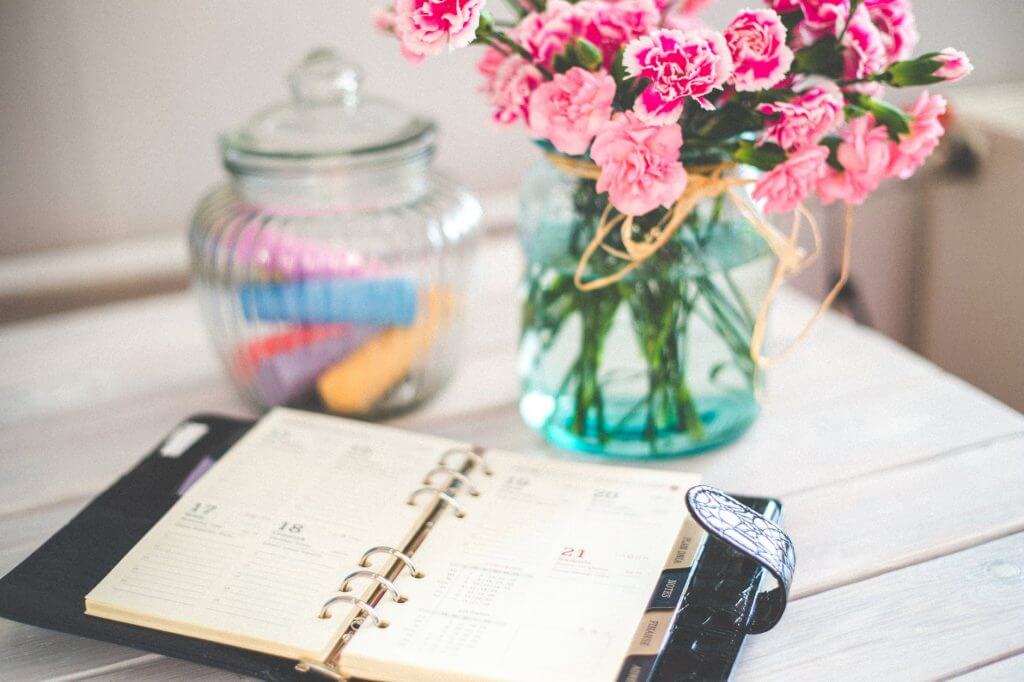
I find it really valuable. Even when I’m not doing it as regularly, I feel the urge to go back not because I feel like I’m guilty to do it, but because I really am excited to do it, and I feel like I want to get back in the groove. It’s really helpful.
You mentioned ideation as your process for ideation in terms of features with user experience, user interfaces, and so forth. Ideation also applies to blog post writing and to all sorts of other things like when I create a list of ideas for a client … I do SEO consulting. I help clients rank higher in Google. One of the things that I do to help them with that is content marketing, creating remarkable content. I’ve never thought to use sketchnoting as a way to ideate around as part of my job. I would just write off different ideas, or write them on a whiteboard or on a sheet of paper. I have different kinds of listicles and personality tests and quizzes, and viral videos, and all that stuff. How do you see ideation and sketchnoting working for a blogger or a content marketer?
That’s a really interesting question. I think there can be definitely some value there, particular as you were speaking about some of these items that you might be considering is this idea that you can map them out. You could get a big piece of paper or a whiteboard and start to maybe put them in categories or see … That’s where it comes alongside of mind mapping, but maybe not so rigid in the mind mapping structure, but this idea that you put everything on the board and maybe then you organize a little bit, and it could even be posted notes where you write all these individual activities. You draw maybe an icon to represent each one, and then you start sticking them on the wall, and then you do it like an affinity diagram. You start organizing them like viral…
All the video stuffs over here and all the quizzes are over there, and the blog posts are down here, and you start seeing things. You could see things as a whole rather than its individual things. I think one of the challenges with computers that I see is they’re so infinite that there can be layers and layers of ideas, but they all seem the same in the computer, and they’re often hidden from view. By using this ideation process of using drawing and writing and sticky notes or whiteboards or paper or whatever, it gets you physically into the activity, and then it lets you see everything all at once, so you can spread it all out on a board, on a wall, on a table and see things holistically. Then, from there, determine, “What are the most important, or can we take one of each from each category? What would be the most important”, and have a plan like that, so you just keep…
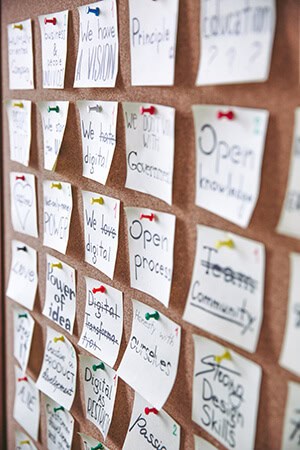
Maybe you’d take that affinity map where they’re divided out, and then you create another sheet that’s timeline, and you move them from one to the other, and say, “We’re going to have one of each of these categories every week”, and then you just pull them off and start lining them up. Then, you can see them how they layout in a timeline and think, “Oh. This one, maybe this would be better in the third week instead of the sixth week, and then, I can take the one in the third week and put it in the sixth week because it aligns better with these other things.” It gives you some freedom to see things all in this single view, rather than hidden somewhere, down the scrolling page or buried inside of folder or something like that.
Yes. That’s a really cool way to think about it. I’m going to try that.
Yes, and give us a shot and let me know how it goes. That’d be an interesting case study.
Cool. Let’s wrap this up with one final question around creativity boosters beyond sketchnoting. What have you found because you’re in a very creative role with your user experience design stuff, also with your Rohdesign business doing book illustrations and sketchnoting conferences and so forth? What are some ways that you boost your own creativity beyond sketchnoting?
That’s a great question. There are lots of different ways I think that I find to do it. One of the big ones is just to be observant. The way I do that is I often set limitations on myself or challenges on myself. Let’s say I’m going to be walking from my office to the parking garage where I’m at, and it’s maybe a mile away. Before I leave, I’ll say “Okay. Somewhere along the way, I have to take a picture of something interesting or unusual.” Then, that sets my mind in this observational mode where I’m looking for interesting things. Then, I’ll take pictures and maybe post them to Instagram or something like that just as an exercise to get my mind in this mode of looking for unusual patterns or things. That’s one way.
When you start seeing unusual things that way, it gets your mind thinking in a different direction. You may find yourself coming up with interesting ideas. Another could be going to a coffee shop or something and say, “I have one hour here or 25 minutes if you want to do say a Pomodoro technique and split it in two 25-minute sections in the five-minute break.” Before this coffee is finished, I have to come up with 25 ideas for a blog post or something like that. I find these games and challenges really fascinating where there’s a time limit component, there’s maybe a quantity component or a minimum. Let’s say I need at least ten but I can do more, those are some ways that I’ll kick myself into gear. I also look for inspiration in movies and film or books. I’ll approach it from an observational perspective like, “What interesting thing about this character?” I might think about, “Why is this character acting the way they are?” Maybe it’s not revealed yet and I might think in the future when that would be revealed like, “What could be the reasons why this person is acting the way they are or that they have this motivation?”
It gets me thinking about other ideas. I think cooking is also a great way to increase your creativity. I really like cooking for my family. I think that it can be pretty helpful in getting me thinking in a different way by using different elements, being limited by, “I’ve got rice, and I have meat, and I have these vegetables. What kind of sauce would go good with this?”, or putting myself in these situations. I think what it looks like when I look back at it is I see these little games that I play to see what I can come up with, with limited materials or limited time or a combination of the two. Those limitations force you to be creative and see what happens. Finally, I would say sometimes, if it’s just drawing or something like that, I might try and choose weird elements. Like maybe I’ve got to use a really thick dry erase marker, and I can only draw on file folders or something. What interesting thing can I come up with those two weird combination of elements? Sometimes, it’s nothing at all. Maybe it’s terrible, but it’s fun to experiment and see, and sometimes, you get interesting ideas from that. I think any kind of combination of limitations where you’re aiming for some kind of a result can be a fun way to kick your creativity and gear.
How can one of our listeners who wants to reach out to you and connect with you, how will they find you?
Sure. The two best ways would be my website, ‘Rohdesign.com’, and there’s a contact there that you can reach out to me or send me an email at ‘Mi**@*******gn.com’. I’m also very active on Twitter, so you can say hello there. Again there, I’m ‘Rohdesign’ on Twitter. Those are probably the two primary places. If you want to look at sketchnotes of other people which I think is a great thing to see how different people interpret this idea, I would recommend going to ‘Sketchnotearmy.com’, and we strive to every day put someone’s work up there that’s different, and we tell their stories in their own words and let them share the work that they do. It’s a great way to be inspired and see that regular people really can sketchnote. You don’t have to be a great artist. I think those would be three places to find me and reach out, and I love when people say hello.
Cool. Thank you again, Mike. This was hugely informative and inspiring. Even though I’m not a great artist, I’m going to try out sketchnoting myself, and I hope my listeners will do the same. Thank you again and thanks to my dear listeners. We’ll catch you on the next episode of Get Yourself Optimized.
Important Links
Connect with Mike Rhode
Books

